- Home
- Facts
FTC Disclosure: If you make a purchase via a link on this site, We may receive a small commission on the transaction - at no added cost to you. Thank you!
Hummingbird Facts
And Information
Here are 27 amazing hummingbird facts that will show how these little birds are one of most unique creatures alive and will capture your mind and heart!
27 Amazing Hummingbird Facts
1. There are 340 species of hummingbirds making them the second most diverse bird family on earth.
2. The average hummingbird weighs only about 3 grams (less than a nickel by comparison)
3. A hummingbird can beat its wings 70 to 80 beats per second.
4. Hummingabird migration is initiated by the amount of daylight when the days get shorter.
Hummingbirds breed in United States and Canada during the summer and migrate south in the Fall to spend the winter in Mexico and Central America.
That is not to say that all hummingbirds migrate. Some species will stay in the U.S. all winter.
Scientists are beginning to notice the overwintering Rufous in some parts of North America.
The Rufous hummingbird has the longest migration, flying as much as 3,000 miles from Alaska to Mexico.
The Ruby-Throated hummingbird also has a long migration route which includes the incredible task of flying 500 miles nonstop across the Gulf of Mexico!
Don’t worry, hummingbirds usually return to the same feeder every year.
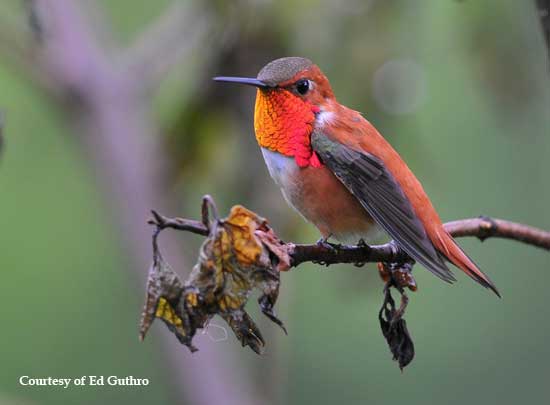 Male Rufous Hummingbird
Male Rufous Hummingbird5. Hummingbird eggs are the smallest in the world. The baby hummingbird usually hatches within a few weeks depending on species and weather.
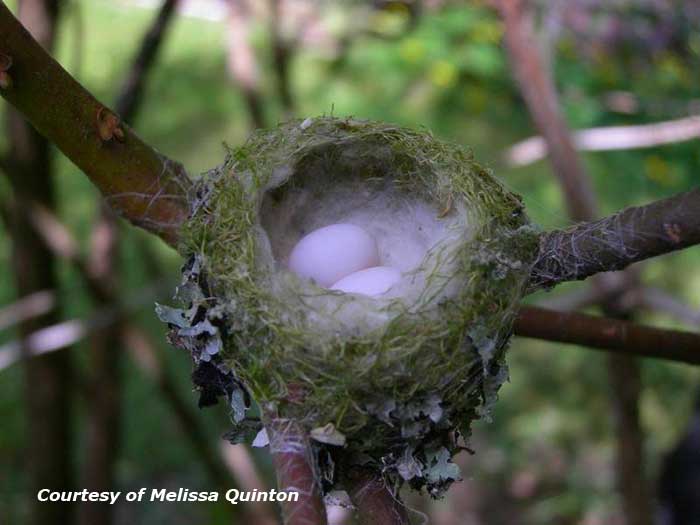 Hummingbird Eggs
Hummingbird Eggs6. Hummingbirds have the least amount of feathers of any bird. They have only 1000 to 1500 feathers.
7. The hummingbird species has the renowned honor of including the Bee Hummingbird of Cuba which is the smallest bird in the world.
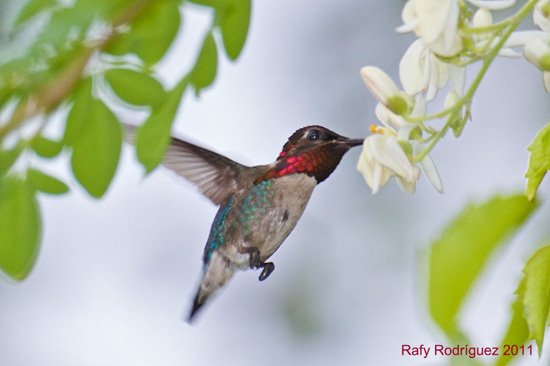 The Bee Hummingbird
The Bee HummingbirdSmallest Bird in the World
8. Hummingbirds do not produce musical sounds. Hummingbird sounds are often chattering sounds. Scientists often describe these sounds as call notes. We now know that some hummingbird sounds originate from their tail feathers.
9. Hummingbird flight is special because their wing anatomy allows them to be the only bird that can fly backwards, upside down and hover indefinitely in place.
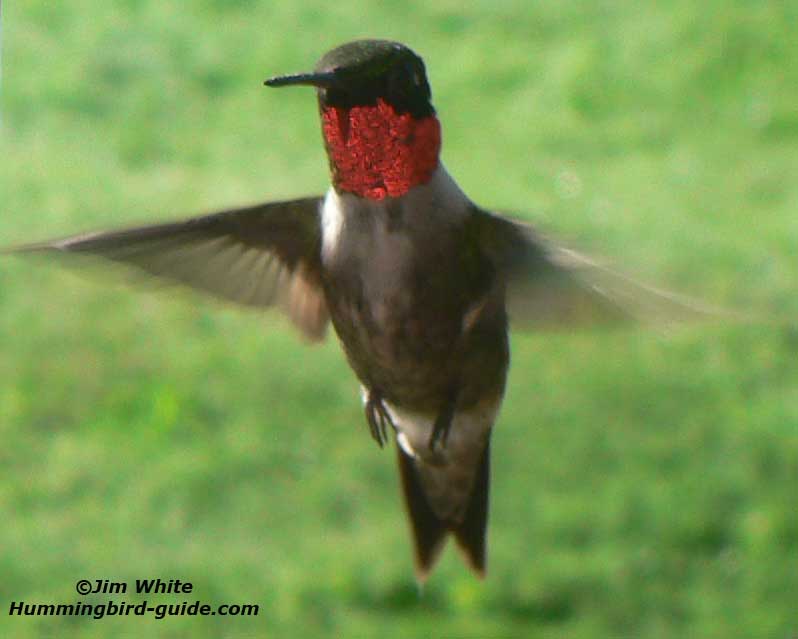 Hovering Hummingbird
Hovering Hummingbird10. Hummingbirds live on the edge of survival and can starve to death in 3 to 5 hours.
11. Hummingbirds have the largest heart of any bird for its size. Its heart rate is often more that 1,200 beats per minute.
12. Hummingbirds conserve their energy during the night and cold temperatures with a hibernation like state called Torpor or Hummingbird Sleep.
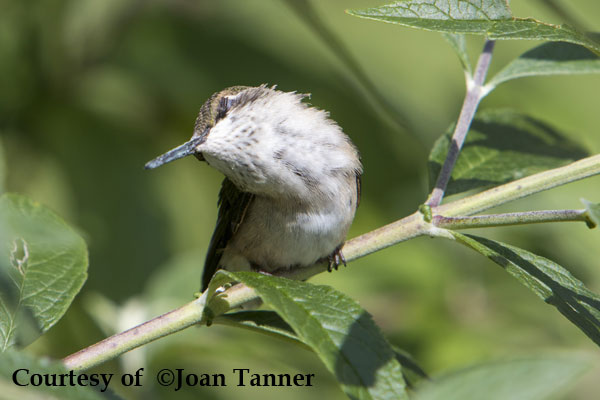 Sleeping Hummingbird in Torpor
Sleeping Hummingbird in Torpor13. Hummingbird mating involves incredible diving rituals. A male will mate with more than one female. The female chooses whether to accept the males. She usually bases this decision on whether or not the male has acquired a suitable territory for the sustenance of her offspring.
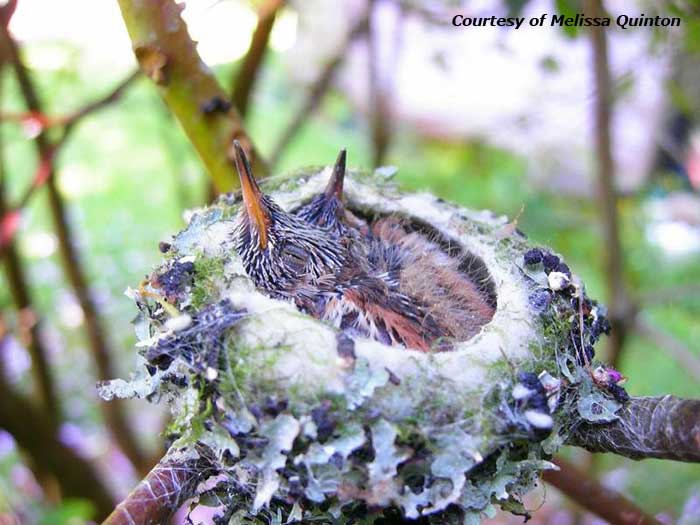 Hummingbird Babies/Chicks
Hummingbird Babies/Chicks14. In the early Spring, before the females arrive, the males will arrive 1 top 2 weeks earlier. Male hummingbirds will fight over a territory and feeders to make their claim. This is a sparring match which can last for hours until one has little energy left and surrenders. (I had the fortune of capturing this ritual of two hummingbirds fighting at one of our feeders on video.)
15. Hummingbird nests are built by the female alone. They are a wonderful piece of architecture that is not only tiny but also flexible. They expand to accommodate the eggs and then later reduce in size once the fledglings have left. Would you like to learn how to find a hummingbird nest to witness the amazing birth and the first days of a hummingbird's life?
16. The male Ruby-Throated Hummingbird was named because of the iridescent feathers on its neck which reflect sunlight at different angles. In spite of the jewel like colors of hummingbirds, their visual beauty is an optical illusion. The feather pigments are black, brown and reddish brown. A hummingbird’s feather can reflect light resulting in remarkable color.
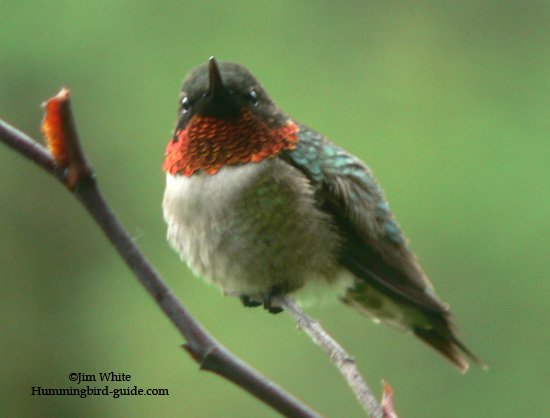 Male Ruby-throated Hummingbird
Male Ruby-throated Hummingbird17. White hummingbirds (Albino hummingbirds) and semi-white (Leucistic hummingbirds) do exist lacking all or nearly all pigment in their feathers
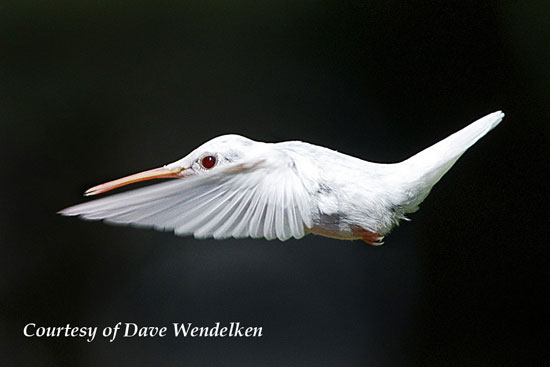 Albino Hummingbird
Albino Hummingbird18. Unlike many birds the plumage of hummingbirds does not change during breeding season but remains the same year-round.
19. Hummingbirds spend an unusual amount of time cleaning (preening) their feathers. The condition of the hummingbird’s feathers is a life and death issue. They need to remain extremely light in order to achieve the flight dynamics that keep them alive.
20. Hummingbirds molt (lose old feathers and grow new ones) yearly. Once in a while I find a tiny hummingbird feather. You can keep a look out too. They are tiny and hard to see.
21. Hummingbirds digest their food in 20 minutes with great efficiency. They extract more than 90% of the sucrose and eliminate the water. If you have ever watched a hummingbird perch, you now know that they are not resting but busy digesting food.
22. Hummingbirds have an ability to pollinate flowers which co-evolved with them. Over thousands of years hummingbirds fed regularly on the nectar of plants for the energy they needed to survive. Plants have evolved with hummingbirds, producing flowers with long tubular shapes to fit the bills of the marvelous birds.
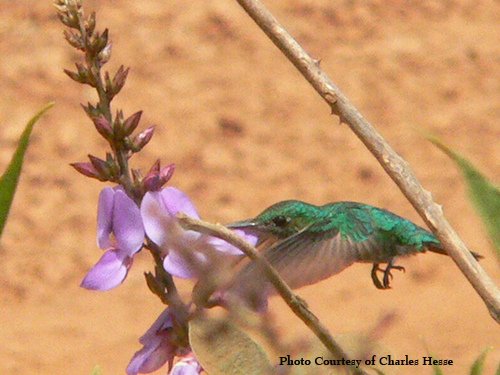 Hummingbird Pollinating Flowers
Hummingbird Pollinating Flowers23. The hummingbird family, Trochilidae, is in the order of Apodiformes. Note: Scientists classify birds based on their anatomy and biochemistry.
24. Believe it or not, there are hummingbird predators such as the praying mantis, the dragonfly, the robber fly, certain spiders, some frogs, and larger predatory birds.
25. Much information has been gathered and documented through a process of Hummingbird Banding by licensed banders.
26. Male Ruby-throated hummingbirds are the first to arrive in the Spring migration and the first to leave in the Fall migration. The females usually migrate (arrive & leave) 2 to 3 weeks later in the Spring and Fall migrations.
27. Hummingbirds eat bugs for protein which is their main food source for survival. Nectar from flowers and our feeders supplies the energy to satisfy their metabolism.
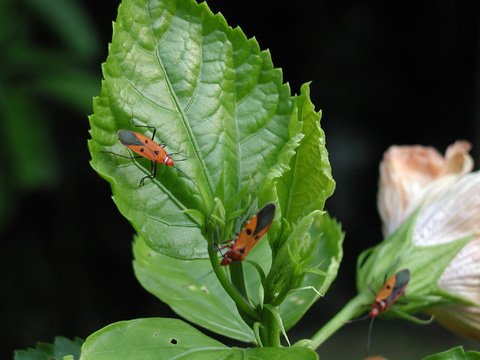 Insects-Hummingbird Protein Source
Insects-Hummingbird Protein SourceVisit our New Hummingbirds for Kids Page
Fun facts for kids, coloring pages, activities and a great gallery of hummingbird species photos!
These hummingbird facts have historically intrigued humans for centuries past and continue to intrigue to the present day.
As we continue to learn about the hummingbirds through ornithological studies, banding, and greater correspondence among enthusiasts, our knowledge and marvel about these birds should increase.
RANGE of HUMMINGBIRDS
Hummingbirds are considered to be a bird of the Americas. They range from southern Alaska to the Caribbean. Most species live in tropical Central and South America.
Only the migratory Ruby-throated Hummingbird breeds east of the Mississippi River and the Great Lakes. Among the number of species that breed in the West is the Black–chinned Hummingbird. The Rufous Hummingbird is the most widespread in Western Canada.
Learn more about Hummingbird Species
OBSERVATION
There is a history between humans and hummingbirds. Their beauty, fearlessness, and other unique qualities have led to a great fascination about these birds.
Many people observe hummingbirds directly in their backyards. Some enthusiasts set up nature cams which will bring live video of hummingbird activities right into their living rooms. Others participate in research while many will travel on bird watching tours.
We hope that these hummingbird facts that we all have learned, can enable us to co-exist without harm for many more centuries to come.
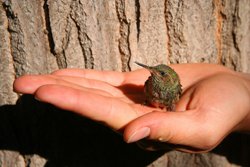
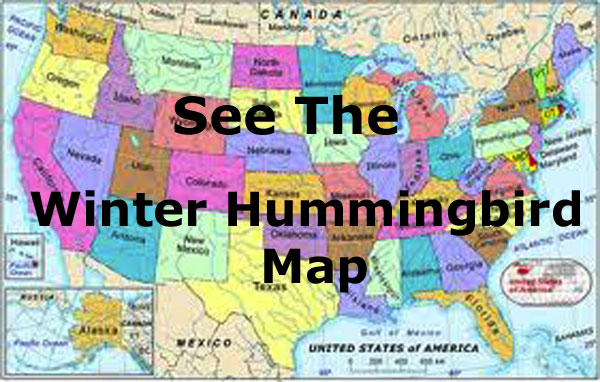

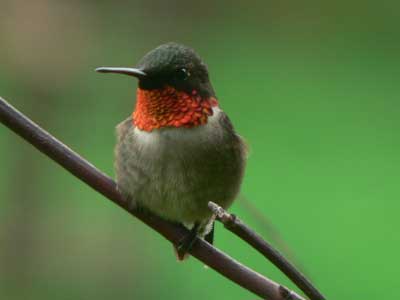







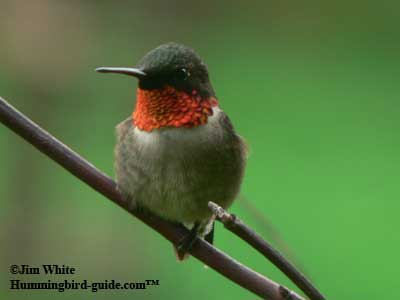
New! Comments
Have your say about what you just read! Leave me a comment in the box below.